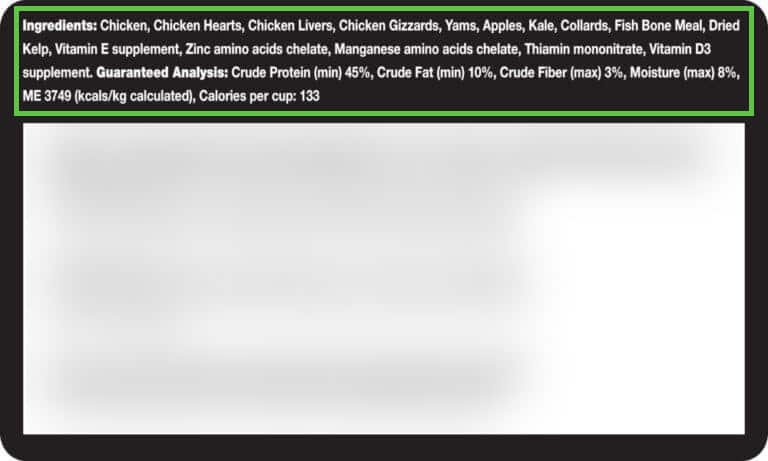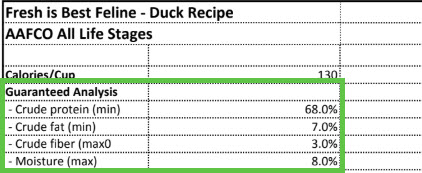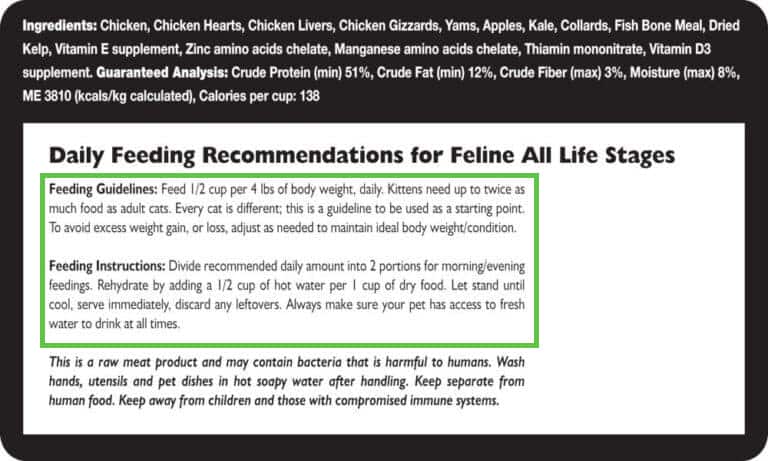How To Read & Understand Raw Pet Food Labels
Navigating pet food labels can feel as tricky as reading a foreign language. In this guide, we break down the essential parts of Fresh Is Best® raw dog food, raw cat food, and raw pet treats labels so you can make an informed buying decision.
What Do the Ingredients Mean?
Q: What should I look for in the ingredient list?
A: Always check the ingredient list for the source of protein. Fresh Is Best® products typically highlight whole meat ingredients like chicken, beef, or fish. Look for recognizable terms rather than ambiguous phrases such as “meat by-products.” This transparency helps ensure your pet is getting high-quality nutrition. Also verify that the product includes fruits and vegetables, which provide essential vitamins and minerals (National Research Council, 2006).
Guaranteed Analysis: What Does It Tell Me?
Q: How do I interpret the “Guaranteed Analysis” section?
A: The “Guaranteed Analysis” lists specific nutritional percentages that manufacturers commit to providing. This typically includes protein, fat, fiber, and moisture. For example, a label might read “Protein 10%, Fat 5%, Fiber 1%, Moisture 8%.”
- Protein: Essential for muscle development and energy, higher protein percentages may be ideal for active pets or growing puppies and kittens (Freeman et al., 2013).
- Fat: Necessary for energy and skin health, fat content also indicates the calorie density of the food. This is especially useful when selecting a diet for less active pets or those prone to weight gain.
- Fiber: Often listed in small amounts, fiber aids digestion. Adjustments in fiber content can be particularly important for pets with sensitive digestive systems.
- Moisture: In raw diets, moisture affects the texture and palatability of the food, as well as your pet’s hydration.
By comparing these percentages against your pet’s dietary needs, you can assess whether the product aligns with their nutritional requirements. Creating a checklist based on your pet’s activity level and health conditions can simplify your decision-making process (Freeman et al., 2013).
What Information is Key on the Packaging?
Q: What other essential details should be on the product label?
A: Beyond the ingredients, certifications, and guaranteed analysis, or special feeding instructions. These details provide further insights into how the product fits your pet’s unique health profile and dietary requirements.
Reading labels on Fresh Is Best raw pet food products involves examining the ingredient list for high-quality proteins and understanding the guaranteed analysis. By focusing on these components and comparing them with your pet’s specific needs, you can confidently choose products that support your pet’s overall health and well-being.
References
Freeman, L. M., Chandler, M. L., Hamper, B. A., & Weeth, L. P. (2013). Current knowledge about the risks and benefits of raw meat-based diets for dogs and cats. Journal of the American Veterinary Medical Association, 243(11), 1549–1558.
National Research Council. (2006). Nutrient Requirements of Dogs and Cats. National Academies Press.





NOTE: The statements made on this website have not been evaluated by the Food and Drug Administration. These statements and the products of this company are not intended to diagnose, treat, cure, or prevent any disease.
Please consult your veterinarian before implementing any new diet, exercise, and dietary supplement programs, especially if your pet has preexisting medical conditions or is taking prescribed medications. The statements made on this website are for educational purposes only and are not meant to replace the advice of your veterinarian.
Proper treatment of health conditions depends upon several factors, including, but not limited to, your pet’s medical history, diet, lifestyle, and medication regimen. Your veterinarian can best assess and address your pet’s individual health care needs. You should consult with your veterinarian before starting a new diet, supplement, or treatment regimen. Individual results may vary.